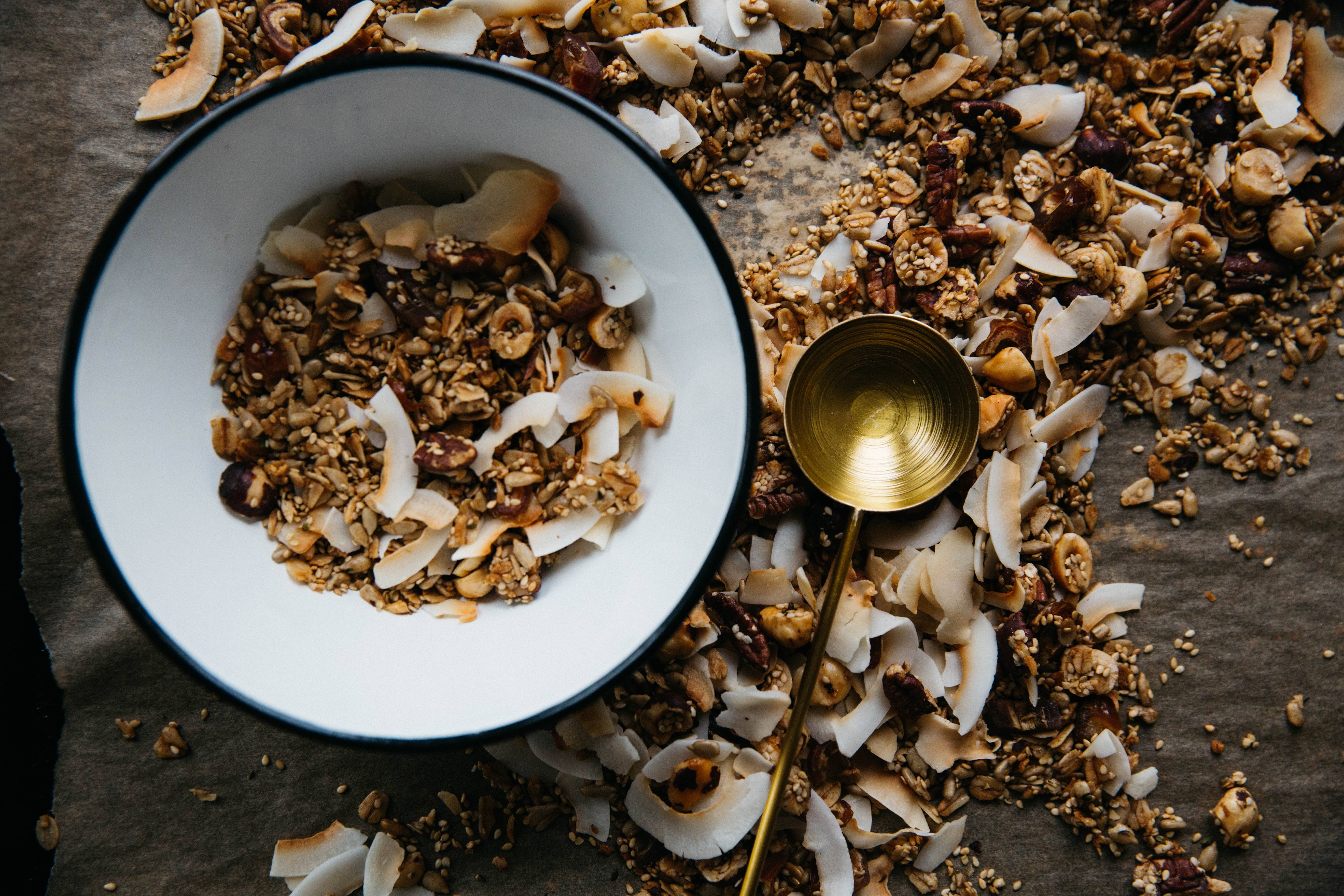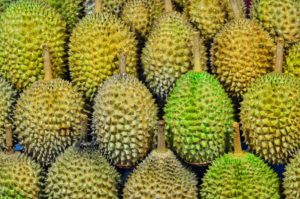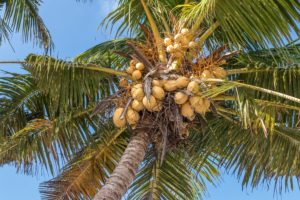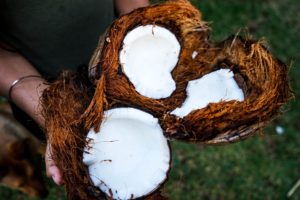The coconut not only has many incredible uses but is also super healthy. Lucky are those who live in the tropics, where coconuts are part of their daily diet. Heart attacks and strokes are very rare in these countries.
Let’s take a closer look at the amazing health benefits of the superfood coconut.
Coconut water – isotonic drink and infusion solution
Coconut water is considered the best water filtered by plants. Many communities in remote areas even replace part of their drinking water with precious coconut water.
It’s packed with vitamins, minerals, hormones, amino acids, various sugars, and many other important substances. Minerals such as potassium, calcium, sodium, phosphorus, iron, zinc, manganese, selenium and copper make it an isotonic drink. Whether you want to exercise, suffer from dehydration or diarrhoea, or just cure a hangover, coconut water is the best choice.
In the fifties, it was scientifically proven that coconut water is sterile. People from Papua New Guinea have had this knowledge for a long time. Before completing difficult operations, their healers washed their hands, their instruments, and patients’ wounds with coconut water. And today we know that coconut water can be used for intramuscular and intravenous infusions without the consequence of an immune reaction or unwanted side effects. The only disadvantage of coconut water is the small amount of sodium, which in turn can be easily compensated by adding sodium chloride (basically salt).
High coconut water consumption has a detoxifying effect. The blood circulation of the kidneys is stimulated and urine production is increased. As a result, toxins are flushed out of the body much faster.
Coconut meat – healthy fibre and fatty acids
Not only coconut water but also coconut meat is super healthy. Its high fibre content has a positive effect on digestion, stimulates the metabolism and strengthens the immune system. Also, fibre reduces blood sugar levels, which in turn prevents diabetes. Fibre also stays in your stomach for much longer, which can help you eat less if you’re trying to lose weight.
Coconuts are known for their high content of saturated fats. However, there is a big difference to saturated fats in milk and other animal products. Coconut meat consists of healthy medium-chain fatty acids, which are broken down faster than long-chain fatty acids. They’re not stored as a fat depot and the risk of sudden food cravings is much lower.
Lauric acid, one of the saturated medium-chain fatty acids, is also known for its antifungal, antiviral and antimicrobial effects.
Coconut oil – one oil for all situations
Because coconut oil is made from coconut meat, it has the same health benefits. Adding coconut oil to your daily diet can boost fat-burning and lower levels of bad cholesterol (LDL) while increasing the level of good cholesterol (HDL).
Coconut oil is ideal for baking, cooking, and frying. Due to its high smoke point, carcinogenic substances are released much later, making it much healthier than other oils.
Coconut oil is not only the perfect companion in the kitchen but also in many other situations.
Here you find more information on coconut oil and 101 great things you can do with it.
Conclusion
Fresh, dried, as a drink or for cooking – coconuts are super healthy and should be eaten every day. Whether you’re cooking with coconut oil, adding coconut flakes to your porridge, or using coconut milk for a delicious curry, it’s time to switch to one of the healthiest fruits in the world!
And whenever you have the chance, grab a fresh coconut and enjoy its pure taste!
How to choose the right coconut?
If you buy imported coconuts in a shop, you should pay attention to a few things.
When buying a young coconut, look for discolouration or mould. The husk of young coconuts should be almost white and look fresh.
When buying a ripe coconut, check the area around the three “eyes”. It’s the softest part of the coconut and when it starts to get bad you’ll notice a greenish mould in this area. The coconut water of these coconuts may already taste sour, and coconut meat may be yellow and can no longer be used.
Always shake a coconut before you buy it. A coconut filled with water is usually fresher. No water or little water means that the coconut has a crack from which water escaped. If you have a few coconuts to choose from, take the heavier one. The heavier the coconut, the more water it normally contains.
In general, it’s best to buy organic coconuts. In this way, you can be sure that no chemicals have been added during the production process and the coconut is as healthy as possible.
How to open a coconut?
Once you have your coconut, you may have another problem: how can you open it without injuring yourself or losing the precious water?
Special “coconut opening tools” make it easy to open young and ripe nuts. They usually consist of a steel tube with a sharp end and a handle that punches a hole in the shell. But even without special tools, a coconut can be easily opened with a large, sharp knife and the right technique.
Young coconuts are much easier to open as they’re still soft inside. Cut off the white husk at the top and cut a hole that’s big enough for your spoon. After drinking the precious water, take out the soft meat with your spoon. To make it easier, you can also cut the coconut in half.
A ripe coconut is slightly harder to open. To get to the delicious water, look for the softest of the three eyes. Usually, two of the eyes have something like an “eyebrow” – those are the harder ones. Make a hole in the soft one with a sharp knife or a clean corkscrew. After drinking the water, use the back of a strong knife to hit the horizontal line of the nut while turning it at the same time. The coconut will break in half. Now all you have to do is separate the hard meat from the shell with a small knife.
Please don’t use a
screwdriver to open your coconut!
Screwdrivers are usually not very clean and you don’t want to spoil your
healthy coconut water and coconut meat, right?
Did you know?
- The coconut palm is the national tree of The Maldives.
- Burning the dry husk of a coconut is a natural mosquito repellent, and is still used in many countries.
- The coconut crab lives on land and likes to eat coconuts. It climbs the tree and throws the coconut down until it cracks open and the meat becomes accessible.
- 2.5 % of injuries in Papua New Guinea Provincial Hospital were caused by coconuts – but only a very small number caused death.
- During World War II Japanese used coconut grenades as a weapon.
- Also during World War II coconut water was used as an emergency IV solution for wounded soldiers when regular IV solution was in short supply.
Where do you get your coconut and coconut products from?
Photo by Rachael Gorjestani on Unsplash
The Coconut Part I: The nut that’s not a nut
The Coconut Part II: Tree of Life and how it can be used
The Coconut Part III: Superfood Coconut and its benefits




